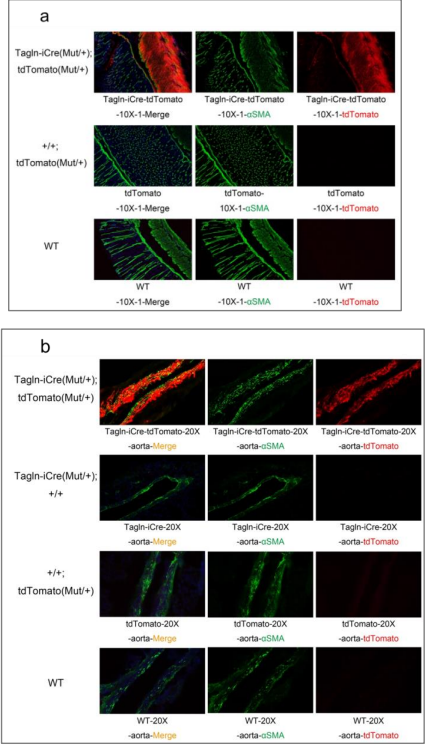Basic Information
- Function research of genes
- Function research of smooth muscle cell
Description
Heterozygous mice for the targeted mutation are viable, fertile, normal in size and do not display any gross physical or behavioral abnormalities. In this strain, iCre recombinase expression is under the control of Tagln promoter. When crossed with a strain containing a loxP-site flanked sequence of interest, Cre-mediated recombination will result in deletion of the floxed sequence in the offspring.
-
Phenotype analysis

-



Frozen sections of the stomach (a), aorta (b), jejunum (c) and bladder (d) of mice were detected by IF, respectively, and the results showed that tdTomato specific expression in Tagln-iCre (Mut /+);CAG-tdTomato (Mut / +) genotypes of double positive mice in alpha SMA markers of smooth muscle cells (with SMA protein markers of smooth muscle cells, the vast majority of the proportion of cells contain tdTomato red fluorescent protein signals, but it is not 100%; possible reasons may be the efficiency of the recombinant enzyme wasn’t 100%), iCre recombinant enzyme specificity expressed in smooth muscle cells, other tissue cells tdTomato red fluorescent protein signal wasn’t detected. The mice in the negative control group also did not express tdTomato red fluorescent protein.


